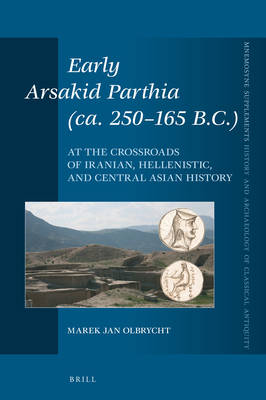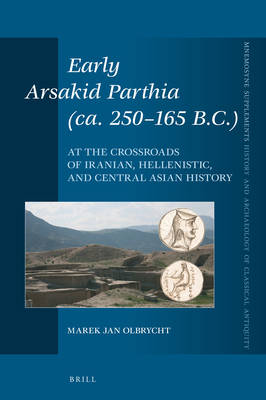
- Afhalen na 1 uur in een winkel met voorraad
- Gratis thuislevering in België vanaf € 30
- Ruim aanbod met 7 miljoen producten
- Afhalen na 1 uur in een winkel met voorraad
- Gratis thuislevering in België vanaf € 30
- Ruim aanbod met 7 miljoen producten
Zoeken
Early Arsakid Parthia (Ca. 250-165 B.C.)
At the Crossroads of Iranian, Hellenistic, and Central Asian History
Marek Jan Olbrycht
€ 233,95
+ 467 punten
Omschrijving
In his new monograph Early Arsakid Parthia (ca. 250-165 B.C.): At the Crossroads of Iranian, Hellenistic, and Central Asian History, Marek Jan Olbrycht explores the early history of the Arsakid Parthian state. Making use of literary and epigraphic evidence as well numismatic and archaeological sources, Olbrycht convincingly depicts how the Arsakid dynasty created a kingdom (248 B.C.-A.D. 226), small at first, which, within a century after its founding, came to dominate the Iranian Plateau and portions of Central Asia as well as Mesopotamia. The "Parthian genius" lay in the Arsakids' ability to have blended their steppe legacy with that of sedentary Iranians, and to have absorbed post-Achaemenid Iranian and Seleukid socio-economic, political, and cultural traditions.
Specificaties
Betrokkenen
- Auteur(s):
- Uitgeverij:
Inhoud
- Aantal bladzijden:
- 396
- Taal:
- Engels
- Reeks:
- Reeksnummer:
- nr. 440
Eigenschappen
- Productcode (EAN):
- 9789004460751
- Verschijningsdatum:
- 27/05/2021
- Uitvoering:
- Hardcover
- Formaat:
- Genaaid
- Afmetingen:
- 154 mm x 236 mm
- Gewicht:
- 798 g

Alleen bij Standaard Boekhandel
+ 467 punten op je klantenkaart van Standaard Boekhandel
Beoordelingen
We publiceren alleen reviews die voldoen aan de voorwaarden voor reviews. Bekijk onze voorwaarden voor reviews.











